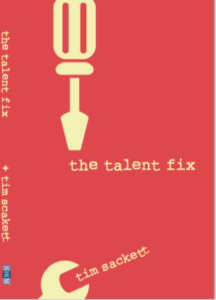Today on The Weekly Dose I review the programmatic job ad platform JobAdx. JobAdx is one of a handful of new platforms on the market that talent acquisition teams can utilize to run their own digital job advertising.
So, first I probably need to explain a little about what the heck is ‘programmatic’ advertising.“Programmatic” ad buying typically refers to the use of software to purchase digital advertising, as opposed to the traditional process that involves RFPs, human negotiations, and manual insertion orders. It’s using machines to buy ads, basically.
Traditionally, you probably did very little with your own job advertising. You might have actually did some old school newspaper advertising, posted your jobs on job boards, or more than likely you used an agency, who charges a fee/premium, who would advertise your ads on various sites.
JobAdX is an advanced digital advertising technology with Pay Per Applicant model. Instead of running ads where you pay-per-click (each time someone clicks on your ad), this new programmatic technology actually only charges you for those who apply. So, ultimately, this pay-per-applicant will be more expensive than pay-per-click on a per event basis, but cheaper overall because you’re only paying for what you want, applicants.
So, what the heck does it really do?
That’s really the big question, isn’t it! Basically, a programmatic ad platform puts your job ad in front of candidates where they are all over the internet. Traditionally, you would put one ad on one site (a professional association site, let’s say). Some potential candidates might go to that site, but many would not. But, almost all potential candidates are somewhere on the internet searching and doing things.
The programmatic ad technology finds the individuals you are looking for and puts the ad, in real-time, in front of them at whatever site they happen to be at. A great example is buying shoes. I love shoes. I bought 3 pairs of shoes this week! So, I go to a site to look at shoes. I find a pair I like, but I know my wife will kill me if I buy one more pair of shoes!
So, I leave that site and go to another site like Facebook. And what do you know there is an ad for those same stupid shoes on Facebook! How did Facebook know!?! Facebook didn’t know, the programmatic ad engine did know! Welcome to the future of job advertising!
A nurse has certain behaviors when searching online that will tell the technology, most likely this person in a nurse, which then allows the programmatic job ad platform (JobAdx) to put your nurse job opening in front of this person multiple times, across multiple sites, not just traditional job search sites.
What I like about JobAdx:
– Programmatic job advertising should be used by every TA shop, regardless of your number of hires, especially if you’re struggling to get results via traditional means. The JobAdx platform is simple to use and allows you to control your spend and budget with an “auto-pilot” feature to make it somewhat idiot-proof (which I definitely need!).
– The JobAdx platform has a great dashboard for you to actually see which jobs are performing really well, and which ones are not performing, so you can increase your spend on those you need, and decrease or stop completely on the jobs you no longer need traffic on.
– Advanced technology within JobAdx will ensure that once a candidate applies that candidate will stop seeing your job ads, which is a much better candidate experience.
– There is frequency capping within JobAdx as well, which is basically an automatic set of rules which will stop showing your job ad to a person after so many times. The theory is once someone sees your ad, let’s say six times, they’ve shown you they aren’t interested, so let’s not show them that same ad again, but go show it to others.
The goal of the JobAdx is to empower employers to advertise jobs more dynamically using the power of Real-Time Job Delivery. I’m completely enthralled by the technology and I truly believe every TA shop should be testing programmatic in their own shops. Go check out JobAdx and get a demo, then put a few hundred or thousand dollars you spend on traditional advertising and try it using programmatic.
The Weekly Dose – is a weekly series here at The Project to educate and inform everyone who stops by on a daily/weekly basis on some great recruiting and sourcing technologies that are on the market. None of the companies who I highlight are paying me for this promotion. There are so many really cool things going on in the tech space and I wanted to educate myself and share what I find. If you want to be on The Weekly Dose – just send me a note – timsackett@comcast.net
Want help with your HR & TA Tech company – send me a message about my HR Tech Advisory Board experience.


